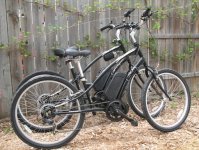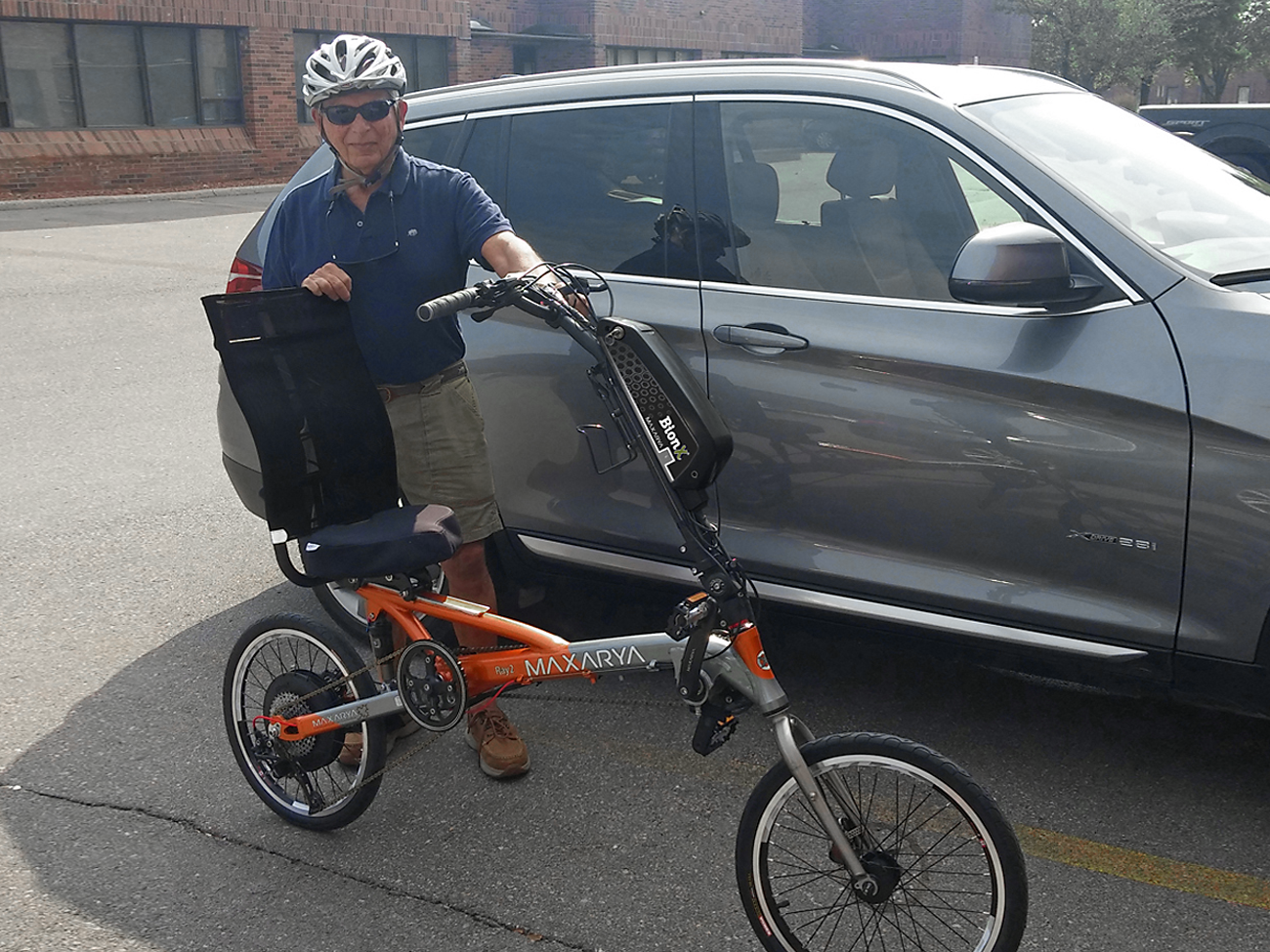john61ct said:
I think the ability to derate current based on overtemp is critical.
That's why i use the ebikes.ca sim to figure this out. Any powertrain i design has to sustain 7% grades for quite a few miles. They are always oversized and thus run in a high efficiency spot in the powerband.
Oversize it too much and you have iron losses eating away at your efficiency on the flats. And more weight than you need.
I have a lot of room to play with because i only build bikes with 22" wheels or smaller these days. The comfort bike platform is perfect for this, because you can extract more efficiency and power out of any DD hub, which also translates to better thermal management of course :thumb:
john61ct said:
By default I consider CA v3 to be the exemplar, but apparently some high-functioning controllers have that built in, dunno if as adjustable, suggestions welcome.
The CA v3's thermal throttling should be considered a 'save your ass' option and not a way to increase your thermal overhead. Consider that you're going up a hill and the power delivered keeps dropping.. you drop into lower and lower RPMs, and the efficiency exponentially goes down the closer you get to 0rpm. An unfortunate characteristic of electric motors.
john61ct said:
strongest available drivetrain + mid-hub (Bafang G310 is it?), **and**
a MAC (Grin version?)
This would be a lot heavier, far more expensive, less efficient ( overall ), and more of a maintenance problem for you down the line, versus a single DD hub.
Check this out. This is a 30mm wide DD ( 14-15lbs ) in a 20" wheel in a semi recumbent frame going up a 10% grade for 11 minutes straight. That's a pretty hardcore climb, and probably beyond what you're trying to do. You can play with the parameters in the simulator from this link and see how she runs on the flats, lesser hills, etc.
https://www.ebikes.ca/tools/simulat...cust_60_180_0.03_V&axis=mph&blue=Lbs&grade=10
20" CLWB semi recumbents allow us to pull stunts like this. Can't do this on an upright bike because 20" wheels + fits a full size adult generally isn't happening unless you have some oddball chopper frame without suspension, and you're gonna regret not having suspension.. so..
Now if we switch to a 26" wheel, MTB frame, and a slower winding to make up for the wheel size difference, look what happens with the same motor. It chokes in 5 minutes.
https://www.ebikes.ca/tools/simulat...cust_60_180_0.03_V&axis=mph&blue=Lbs&grade=10
That's the small wheel and aero advantage of a semi recumbent.
a 24" rear wheel would be a nice compromise on a crank forward 'comfort bike', but It's just not as good.. and you rarely see rear suspension on those kinds of bikes, which you really need, since more of the weight sits on the back of the bike than usual.




